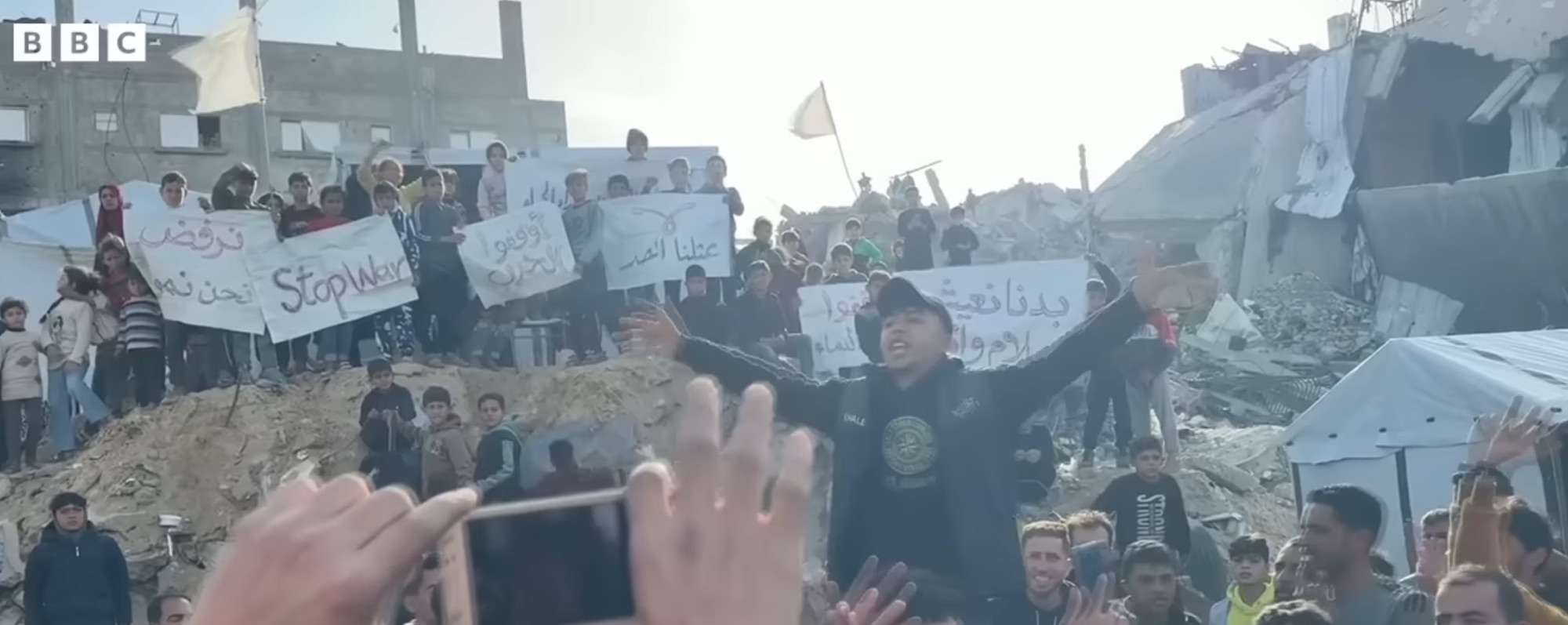In an unusual demonstration of public dissent, protests erupted in northern Gaza, where hundreds of people gathered to call for an end to the ongoing war. Among the demonstrators, some protesters voiced anti-Hamas slogans, marking an uncommon expression of frustration toward the governing authority in Gaza. This article examines the significance of these protests, analyzing the socio-political context, potential implications, and the broader ramifications for both local governance and international diplomatic efforts.
Introduction
The Gaza Strip has long been a focal point of conflict, with its residents caught between Israeli military operations and the governance of Hamas. Public dissent against Hamas has been rare due to the organization’s tight control over the region. However, recent protests in northern Gaza, where some demonstrators chanted anti-Hamas slogans, signal a notable shift in public sentiment. This paper explores the motivations behind these protests, their potential impact on the region, and what they may indicate about the future of governance in Gaza.
Background
Hamas has ruled Gaza since 2007, following a violent split from the Palestinian Authority. The organization has faced criticism from both within and outside the territory for its governance, economic mismanagement, and role in conflicts with Israel. Given the tight political and security grip Hamas maintains, open criticism is typically suppressed. The emergence of public protests featuring anti-Hamas rhetoric suggests a critical turning point in the political dynamics of Gaza.
Analysis of the Protests
The protests in northern Gaza stem from increasing dissatisfaction among civilians, driven by deteriorating living conditions, wartime destruction, and a sense of political stagnation. Key factors contributing to the dissent include:
- Humanitarian Crisis – Gaza’s population has endured repeated conflicts, economic hardship, and infrastructural collapse, leading to widespread frustration.
- Lack of Political Alternatives – With Hamas maintaining firm control, dissenters have limited avenues to express grievances.
- War Fatigue – Civilians bear the brunt of continued violence, fueling a desire for a cessation of hostilities.
- International Influence – External actors, including regional powers and international organizations, may play a role in shaping the trajectory of public sentiment.
Implications and Consequences
The protests carry significant implications:
- For Hamas: The public display of dissatisfaction challenges the group’s authority and may prompt a harsher crackdown or, alternatively, internal reassessment of policies.
- For the Palestinian Political Landscape: These protests could indicate a shift in political alignments and demands for alternative governance structures.
- For the International Community: The expression of anti-Hamas sentiment provides insight into the complexities of Gazan public opinion, potentially influencing diplomatic strategies and humanitarian responses.
Conclusion
The recent protests in northern Gaza, marked by the rare occurrence of anti-Hamas slogans, signal a moment of political and social significance. While it remains uncertain whether this dissent will escalate or be swiftly suppressed, it highlights growing frustration among Gaza’s residents. Understanding these protests within the broader geopolitical and humanitarian context is crucial for anticipating potential changes in the region’s governance and conflict dynamics.
References
- Al Jazeera. (2024). “Protests Erupt in Northern Gaza Amid Escalating Conflict.” Retrieved from www.aljazeera.com
- BBC News. (2024). “Gaza Protests: Rare Public Dissent Against Hamas Emerges.” Retrieved from www.bbc.com
- Human Rights Watch. (2023). “Gaza: Civil Liberties and Political Repression Under Hamas Rule.” Retrieved from www.hrw.org
- International Crisis Group. (2024). “Hamas and the Changing Political Dynamics in Gaza.” Retrieved from www.crisisgroup.org
- The New York Times. (2024). “Frustration Mounts in Gaza as Residents Call for End to Conflict.” Retrieved from www.nytimes.com

By: Donte Nelson


